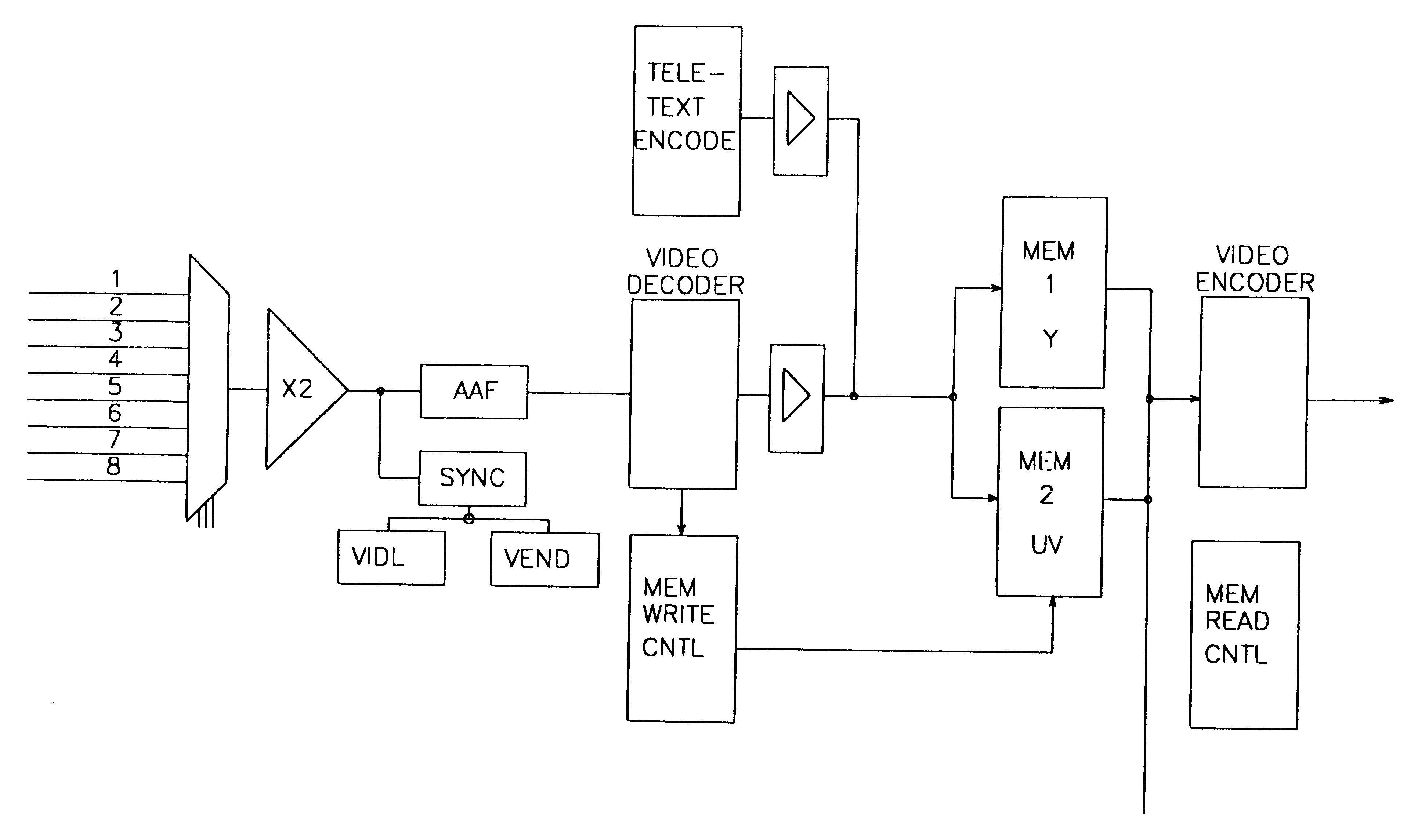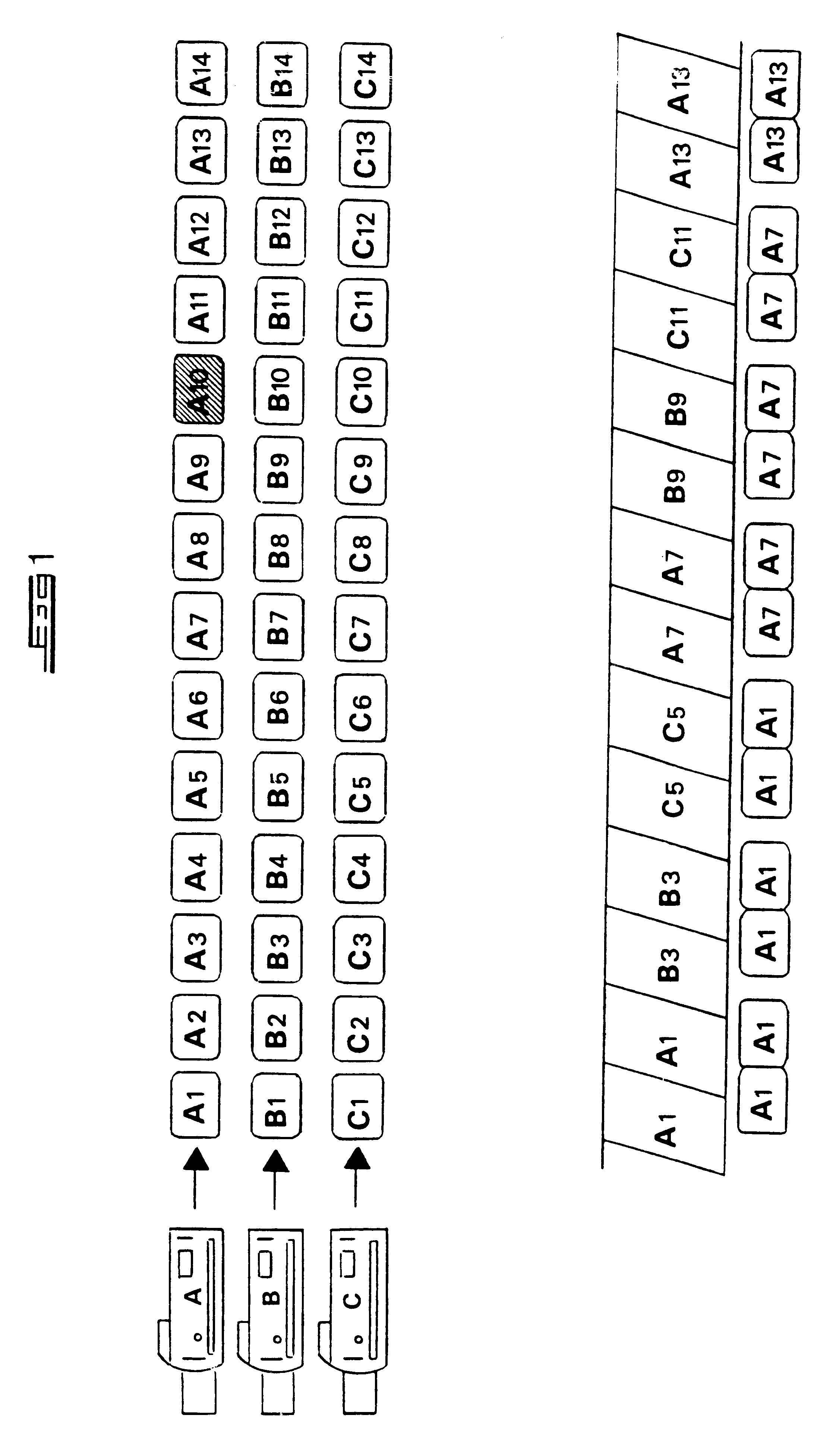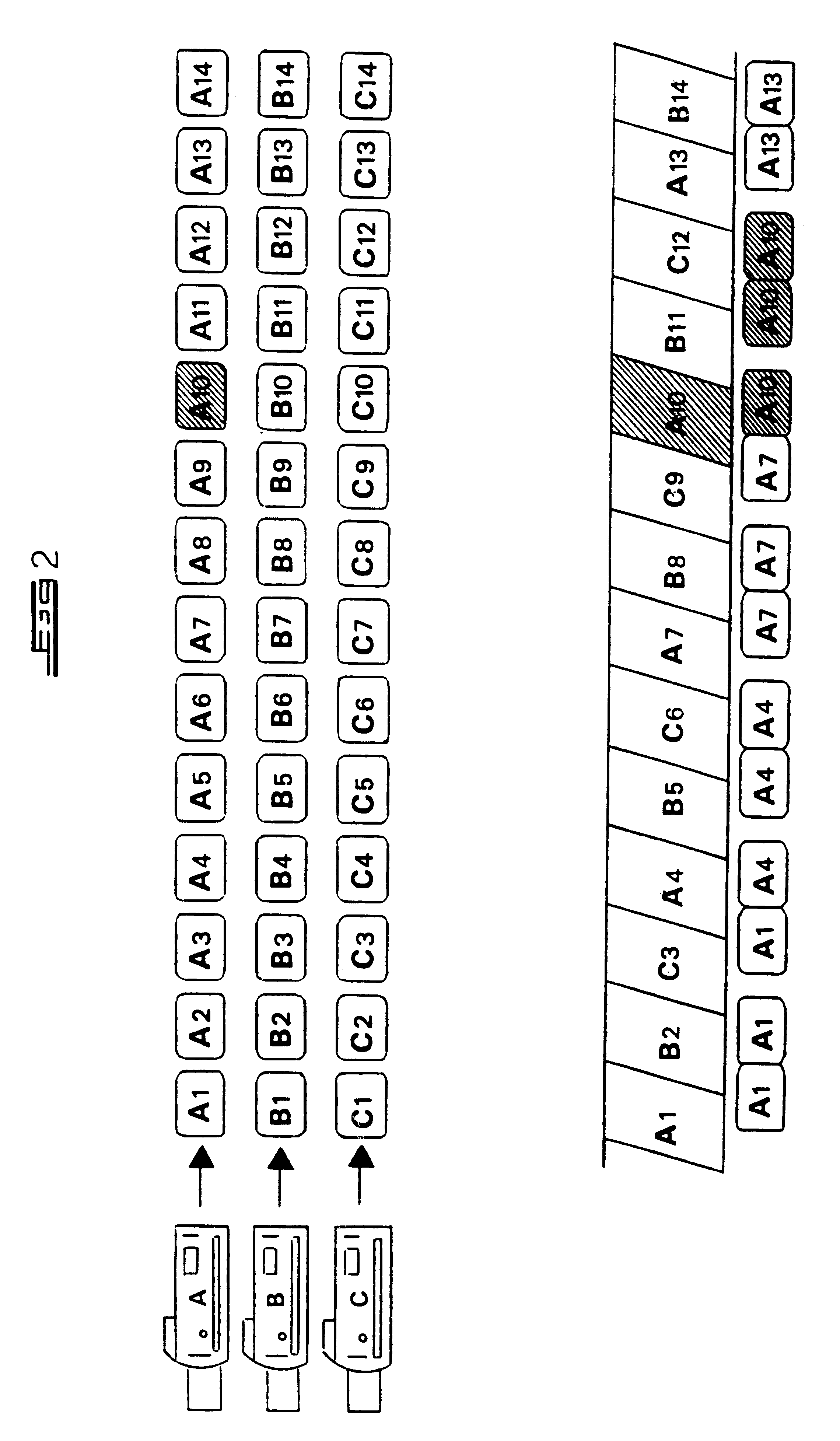Fast video multiplexing system
a video multiplexing and video data technology, applied in the field of video data signal processing, can solve the problems of time division multiplexing output, non-continuous video input, non-synchronised video sources, etc., and achieve the effect of reducing the amount of data los
- Summary
- Abstract
- Description
- Claims
- Application Information
AI Technical Summary
Benefits of technology
Problems solved by technology
Method used
Image
Examples
Embodiment Construction
In a conventional TDM system there is some delay in switching between the outputs of respective video data sources A, B and C. Such system cope with the delay by repeating fields from each source while waiting to switch to the next source. For example, in FIG. 1, field 1 from source A is repeated before a switch can be made to source B, and so on. This reduces the mount of useful data carried by the system. Due to the typically asynchronous nature of different video sources, a finite time is required for synchronisation during the switching from one input video source to the start of a field from the next video source. This problem can be addressed by the synchronisation and phase-locking of the different input video sources. However, this is generally not practical and is costly, as it requires that the synchronising signals be passed between the different sources. Apart from this, the cost of providing very fast switches to switch between successive video sources is relatively hig...
PUM
| Property | Measurement | Unit |
|---|---|---|
| time division | aaaaa | aaaaa |
| time division multiplexed | aaaaa | aaaaa |
| time | aaaaa | aaaaa |
Abstract
Description
Claims
Application Information
 Login to View More
Login to View More - R&D
- Intellectual Property
- Life Sciences
- Materials
- Tech Scout
- Unparalleled Data Quality
- Higher Quality Content
- 60% Fewer Hallucinations
Browse by: Latest US Patents, China's latest patents, Technical Efficacy Thesaurus, Application Domain, Technology Topic, Popular Technical Reports.
© 2025 PatSnap. All rights reserved.Legal|Privacy policy|Modern Slavery Act Transparency Statement|Sitemap|About US| Contact US: help@patsnap.com



